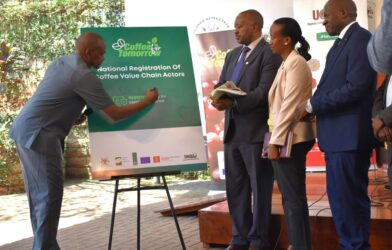In a bold move to align its economic growth with environmental stewardship, Uganda has embarked on the development of a National Green Taxonomy. This comprehensive classification framework aims to categorize goods, services, projects, and activities based on their contributions to the country’s climate and sustainability goals.

Spearheaded by the Ministry of Finance, Planning and Economic Development (MoFPED) through the Climate Finance Unit (CFU), the development of the taxonomy is supported by the European Union (EU) and the Global Green Growth Institute (GGGI) under the UG-SPEAR project. The CFU is mandated to mobilize climate finance as stipulated in the National Climate Change Policy (2015) and the National Climate Change Act (2022).
The motivation for this initiative stems from Uganda’s unwavering commitment to sustainable development. As the country navigates the challenges of economic growth, it has recognized the critical importance of ensuring that this progress is not achieved at the expense of the environment. The National Green Taxonomy will serve as a crucial tool in channeling both domestic and international finance into sustainable projects and initiatives.
The Climate Finance Unit is tasked with bridging the climate finance gap of USD 28.1 billion needed to implement the planned climate actions outlined in Uganda’s updated Nationally Determined Contribution (NDC), The National Green Taxonomy will be a vital tool in this effort, providing clear criteria for what constitutes a ‘green’ project and mobilizing green finance towards sustainable initiatives.
The taxonomy will draw inspiration from best practices in existing frameworks, such as those developed by the European Union, aBi (the African Guarantee Fund for Small and Medium-sized Enterprises), and Kenya. A methodological framework tailored to Uganda’s unique context and needs is being meticulously crafted, taking into account various guiding documents, including the World Bank Guide, the Climate Bonds Taxonomy, the aBi Taxonomy, and the Climate Change Adaptation Taxonomy.
By establishing this national green taxonomy, Uganda is taking a significant step towards attracting international finance, promoting sustainable development, protecting its rich biodiversity, and aligning with global environmental standards.
As Uganda’s National Green Taxonomy takes shape, it will be seamlessly integrated into the country’s broader policy, regulatory, and financial frameworks. This alignment will ensure that the taxonomy is not merely a standalone effort, but rather a integral component of Uganda’s holistic approach to sustainable development and climate action.
Uganda’s journey towards sustainability is undoubtedly a crucial one, and the development of the National Green Taxonomy is a testament to the country’s unwavering commitment to this cause. As the framework takes shape, it promises to pave the way for a greener, more inclusive, and climate-resilient Uganda, setting an example for other nations to follow in the global pursuit of a sustainable future.













